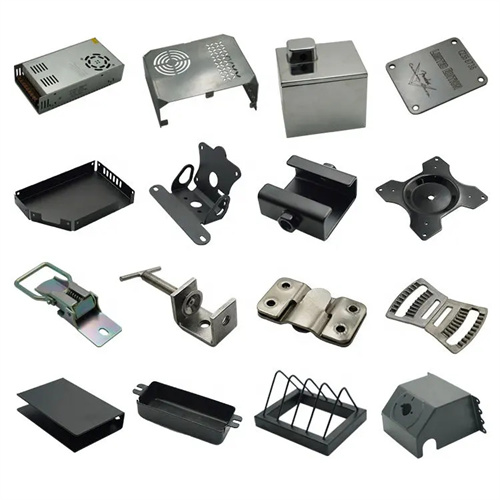Nickel and nickel-copper alloy rods
Nickel and nickel-copper alloy rods are made from pure nickel or nickel-copper alloys through forging, rolling, and other processes. They offer high strength, corrosion resistance, and excellent processability, making them widely used in marine engineering, chemical equipment, precision machinery, and other fields. Pure nickel rods, with a purity of ≥99.5%, exhibit excellent alkali resistance and electrical conductivity, making them suitable for electrodes and conductive components used in strong alkaline environments. Nickel-copper alloy rods (such as Monel 400) contain 65-70% nickel and 28-32% copper, combining the corrosion resistance of nickel with the thermal conductivity of copper. They exhibit excellent corrosion resistance in media such as seawater and dilute sulfuric acid, with corrosion rates kept to less than 0.02mm/year, making them ideal materials for marine engineering. Rod diameters typically range from 5 to 300mm, and forged or rolled rods are available upon request to meet the requirements of various processing scenarios.

The production process for nickel and nickel-copper alloy rods requires a balance between strength and ductility. The core steps include smelting, forging/rolling, and heat treatment. Smelting is performed in a vacuum induction furnace or electric arc furnace. Pure nickel rods are made from electrolytic nickel, while nickel-copper alloy rods incorporate a proportionate amount of high-purity electrolytic copper. During the smelting process, gas content (oxygen ≤ 0.005%) and impurity elements (iron ≤ 0.5%) are strictly controlled to ensure uniform composition. After homogenization annealing (700-800°C for pure nickel and 900-1000°C for Monel alloys), the ingots are hot-worked. Forged rods are produced using open forging or die forging, while rolled rods undergo multiple passes in a hot rolling mill at temperatures between 800-1100°C, with deformation controlled at 20-30% per pass to refine the grain structure. The finished bars undergo solution treatment (water quenching at 1000-1050°C for Monel alloy) and aging treatment (400-500°C for pure nickel) to eliminate internal stresses and optimize mechanical properties. Finally, they undergo non-destructive testing (ultrasonic testing) and dimensional measurement to ensure the bars are free of internal defects and maintain a diameter tolerance of ±0.1mm.

In the field of marine engineering, nickel and nickel-copper alloy rods are key structural materials. The evaporator heat transfer tube supports of seawater desalination equipment are made of Monel 400 alloy rods. Their seawater corrosion resistance ensures continuous operation for over 15 years. One island desalination plant reduced its annual maintenance costs by 60% after adopting this material. The armor reinforcement core of submarine cables is made of nickel-copper alloy rods with a diameter of 20-50mm. They can withstand deep-sea high pressure and seawater corrosion while providing sufficient structural strength. In shipbuilding, pure nickel rods are used for yacht propeller shafting. Their excellent wear resistance and resistance to cavitation corrosion can extend the shafting service life to over 20,000 hours.

Nickel and nickel-copper alloy rods are widely used in the chemical and precision machinery sectors. Monel K500 alloy rods (reinforced with aluminum and titanium) are used in ammonia pump shafts in fertilizer production. These rods maintain a tensile strength exceeding 700 MPa in high-pressure ammonia environments, significantly improving operational stability. Pure nickel rods with a diameter of 50-100 mm are used in the agitator shafts of fine chemical reactors. These rods are corrosion-resistant to concentrated alkaline solutions, ensuring long-term, trouble-free operation of the agitation system. In precision machinery, Monel 400 alloy rods are used to make plungers for metering pumps. Their excellent wear resistance and dimensional stability enable metering accuracy to be maintained within ±0.5%. A pharmaceutical company has achieved a 2% improvement in liquid medicine filling accuracy by using this material.

With the development of the high-end equipment manufacturing industry, the performance of nickel and nickel-copper alloy rods has been continuously optimized, and their application scenarios have continued to expand. Through directional solidification technology, manufacturers have developed axially grain-boundary strengthened nickel-copper alloy rods, which have increased their high-temperature strength by 20%, making them suitable for supercritical chemical equipment. For large-scale marine engineering projects, ultra-large forged rods with diameters exceeding 300mm have been developed to meet the manufacturing needs of submarine oil and gas pipeline connectors. In terms of sustainable development, companies are promoting near-net-shape forming processes, increasing material utilization from 60% to 85%, and reducing production costs. In the future, with the rise of industries such as deep-sea development and hydrogen energy equipment, nickel and nickel-copper alloy rods will develop towards higher strength and higher corrosion resistance, providing key material guarantees for the safe operation of equipment in extreme environments.
